OSR What?
Ever been in a game where the GM presents you with a challenging situation (puzzle, trap, combat, social encounter, etc.) and the first thing you and your fellow players did was to drop your eyes to your character sheet and look for a skill, feat, or other ability you could use to solve it?
If you have, then you need a healthy dose of OSR. If you haven’t, then congratulations, you’ve got that OSR spirit going already – so why not try an RPG that embraces it?
OSR? Huh? What’s that? What does “OSR” stand for? Is it:
- Old School Rules?
- Old School Renaissance?
- Old School Revival?
The answer is “all of the above”. And how about this? Are OSR games for:
- Old farts who started gaming in the eighties or even – shudder – the seventies?
- Hipster gamers who like to play games “you probably haven’t heard about”?
- Gamers who enjoy more freedom, fewer rules, and a more creative, seat-of-the-pants gaming experience?
Again, the answer is “all of the above”.
What do we mean when we talk about the OSR?
So…what’s all the fuss about? Well, many modern games are very complex. To give players options, they layer in skills, powers, feats, talents, gifts, connections, weaknesses, strengths, social status, and more. And modern games often create characters who are very hard to kill; after all, character creation takes a lot of time, and you’ve got to get a chance to use all those special rules, right?
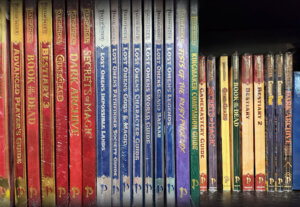 Speaking of which, modern rulebooks are often big, to the point that reading them can feel like homework. Players don’t want to read through such hefty tomes, so it falls to the referee (or GM, DM, etc.) to pick up the slack and take on an even heavier load.
Speaking of which, modern rulebooks are often big, to the point that reading them can feel like homework. Players don’t want to read through such hefty tomes, so it falls to the referee (or GM, DM, etc.) to pick up the slack and take on an even heavier load.
OSR is the antidote to all of that. It’s about making your gaming sessions “heads up” instead of “eyes down.”
 It all began, more or less, in 2006. Concerned that older, out-of-print versions of D&D were getting harder and harder to come by, Matthew Finch and Stuart Marshall created a book called OSRIC: the Old School Reference and Index Compendium. OSRIC used the Open Game License to recreate the Advanced Dungeons & Dragons rules in a legal and freely available format. With OSRIC, anyone who wanted to could publish supplements or adventures for First Edition AD&D. OSRIC was a big hit with the online RPG community. Its success spawned a cottage industry of self-published rules and supplements, all based on out-of-print versions of D&D. Suddenly, the floodgates were open.
It all began, more or less, in 2006. Concerned that older, out-of-print versions of D&D were getting harder and harder to come by, Matthew Finch and Stuart Marshall created a book called OSRIC: the Old School Reference and Index Compendium. OSRIC used the Open Game License to recreate the Advanced Dungeons & Dragons rules in a legal and freely available format. With OSRIC, anyone who wanted to could publish supplements or adventures for First Edition AD&D. OSRIC was a big hit with the online RPG community. Its success spawned a cottage industry of self-published rules and supplements, all based on out-of-print versions of D&D. Suddenly, the floodgates were open.
OSR games harken back to the hobby’s early days. OSRIC notwithstanding, most OSR rulesets usually take inspiration from the Basic and Expert D&D sets, often called “B/X”.
“B/X” is Moldvay and Cook’s 1981 revision of the 1977 “Holmes” edition (created by John Eric Holmes). You might also come across references to BECMI, which is a call-out to the full line of Basic D&D boxed sets published by TSR: Basic, Expert, Companion, Master, and Immortal.
What was so good about B/X? Fans often praise its straightforward presentation and the relative simplicity of its rules. Rather than trying to create game mechanics for every situation, B/X D&D trusts the DM and players to use their creativity to solve problems and resolve encounters.
Combats in these versions of D&D are highly lethal, especially at low-level, and you don’t want to get too attached to your character – they might not be around for long! (If they die, creating a new character only takes a few minutes).
Most importantly – and this is really the whole point of any OSR game – players will have to rely on their own quick thinking and smarts to get themselves out of trouble.
There are other games that helped inspire the OSR, besides early D&D. Early editions of Runequest, Tunnels & Trolls, Warhammer Fantasy Roleplay, and The Fantasy Trip all had an influence. Although the OSR typically focuses on D&D, it is as much about a mood and style of play as it is about any specific ruleset.
* Fun fact: Basic D&D outsold Advanced D&D First Edition; it was only overtaken with the release of Second Edition and TSR’s decision to let the basic version wither on the vine.
There can be only … two?

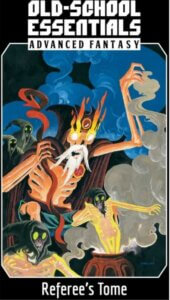 Some OSR games are “retro-clones”. That is, re-skins, re-edits, or re-imaginings of D&D’s various editions (often B/X). These games try to cleave as closely as possible to their original inspirations, often changing rules only where necessary for clarity or ease of use. Examples include Swords & Wizardry, Old School Essentials (OSE), and Labyrinth Lord.
Some OSR games are “retro-clones”. That is, re-skins, re-edits, or re-imaginings of D&D’s various editions (often B/X). These games try to cleave as closely as possible to their original inspirations, often changing rules only where necessary for clarity or ease of use. Examples include Swords & Wizardry, Old School Essentials (OSE), and Labyrinth Lord.
Other OSR games take various key concepts and elements of the OSR experience – lethal combat, uncommon magic, “hexcrawl” exploration, and dungeons – and combine them with new rulesets to deliver that old-school flavor in a new-school package. These include titles such as Dungeon World, Forbidden Lands, Mörk Borg, Troika, and Into the Odd.
As the OSR evolves, just where to draw the line between a retro-clone and a game inspired by older gaming sensibilities becomes murkier. The good news is that there are lots of ways you can inject a little OSR into your gaming experience. Check out some of these options.
Building on BECMI: the retro-clone revolution
These games, broadly speaking, build on the D&D rules. They’re mostly compatible with old modules and supplements. Many offer some surprisingly subtle and clever rules changes to streamline the play experience. You won’t find long lists of skills and feats on the character sheets, only attributes, class, level, and other essentials.
Old School Essentials (OSE)
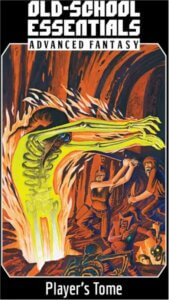 Publisher: Necrotic Gnome
Publisher: Necrotic Gnome
OSE is the best edition of B/X that TSR never published. It’s one of the most popular games listed here and is something like a complete rewrite of the old game but with the rules and systems updated for better layout and clarity. OSE is probably the closest game on this list to a pure clone of an existing ruleset, as its rules are almost identical to their source materials. Its emphasis is on making the rules both clear and accessible (in an easy-to-navigate rulebook). Plus, it has a chapter on ‘Sentient Swords.’ Say no more.
Try it: If you want the best-ever traditional version of B/X.
Swords & Wizardry
 Publisher: Frog God Games
Publisher: Frog God Games
Matt Finch, who co-authored OSRIC, is the primary designer behind Swords & Wizardry. Like OSE, Swords & Wizardry emulates a specific version of D&D. In this case, the original 1974 game, plus that game’s various supplements. Unlike OSE, however, the authors weren’t interested in creating an exact clone of any one ruleset, so they made a few changes along the way. The result is a game that emulates D&D not as it was written back in the day, but how it was actually played. There are elements of both AD&D and original D&D, plus a few house rules to clarify and streamline things. Swords & Wizardry is one of the longest-running, most well-supported systems on this list. There are lots of versions, which can be confusing for a new player. Start with Swords & Wizardry Complete, which is the current version from Frog God Games.
Try it: If you want a well-supported game based on the oldest version of D&D.
The Black Hack
 Publisher: Square Hex
Publisher: Square Hex
A compact OSR RPG by David Black, The Black Hack feels a lot like B/X but uses slightly different mechanics. The book covers everything you need including combat, magic, exploration, monsters, and even a sample dungeon. The rules are a beautiful simplification of the originals and make sense in a way that the TSR books never quite clicked for some people. If you’re after the distilled essence of the glory days, this just might be it. Plus, the author includes a bunch of fun charts and tables that can help you generate cool ideas during game prep or on the fly.
Try it: If you want a streamlined version of B/X with lots of great idea-generators.
Whitehack
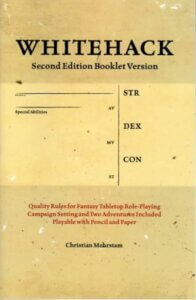 Publisher: WhitehackRPG
Publisher: WhitehackRPG
Whitehack is a little more freeform than The Black Hack, making it better suited to more experienced gamers. It embraces GM and player creativity, so the rules are more abstract; for example, there are no character classes. Instead, you choose to be Deft, Strong, or Wise. It radically separates rules from setting so there’s more of a BYO/DIY vibe, but it lays a strong foundation for any type of fantasy game you favor.
Try it: If you want a simple OSR system with plenty of room for your own creativity.
Five Torches Deep
 Publisher: Sigil Stone Publishing
Publisher: Sigil Stone Publishing
According to Sigil Stone, Five Torches Deep offers ‘5e skeleton, OSR meat.’ Sounds tasty – and indeed it is. The creators also describe their game as ‘just about everything we … have come to expect from an OSR adventure game: brutal, challenging, streamlined, and accessible.’ It comes in a tight 48-page rulebook that draws from D&D 5e as much as earlier editions, making it highly accessible if you’re a modern gamer who wants a low-friction entry into the wonderful world of OSR games.
Try it: If you’re familiar with 5E but you want a modern take on OSR.
Dungeon Crawl Classics
 Publisher: Goodman Games
Publisher: Goodman Games
‘Abandon all presumptions, ye who enter here,’ says the Dungeon Crawl Classics rulebook on p. 10. It’s not kidding. If you can do that, and grab some polyhedrals (including your trusty d3, d4, d7, d14, d16, d24, and d30), then you’re in for a rollicking good time. DCC is the answer to the question: what if we could go back to 1974 and reinvent D&D, but way more gonzo? It basically invented and popularized the ‘funnel’: where you make several level 0 characters and run them through an adventure. Any who survive get to become level 1 characters. Hardcore? Yes. The most fun you can have with your pants on? Probably not, but it’s a blast to play.
Try it: If you want an OSR game that puts a strong emphasis on fun and randomness over trying to emulate a particular ruleset.
New Directions: Beware Wandering Monsters, Traps, and TPKs**
These games focus on providing an old-school experience, including dungeon crawling, exploration, monster fighting, looting, and a dash of seventies and eighties-style weirdness. But they use modern rules and concepts, offering plenty of opportunities for character development as well as in-game narrative creation and ‘sandbox’-style play.
** Total Party Kills. Keep the dream alive, GMs.
Forbidden Lands
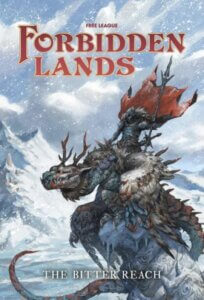 Publisher: Free League
Publisher: Free League
If you’re going to get into sword fights, you really should wear armor. Unless you like being brutally hacked to death. This is one of the first lessons that Forbidden Lands PCs learn, and they may well learn it the hard way. That’s okay, because it doesn’t take too long to roll up a new character – and the rules for fleeing combat are easy to understand. Free League’s very popular house system powers Forbidden Lands, and the setting is a fresh take on ‘grim and brutal’ without descending into horror or gratuitous violence. The game emphasizes exploration, with a neat hex map that changes as the players explore it. Plus, it all comes packed in a cool box (just like B/X D&D), and the books and components are gorgeous!
Try it: If you like exploration, hardcore combat, low magic, and a weird, nasty setting.
Mörk Borg
 Publisher: Free League
Publisher: Free League
I mean really just look at it. Mörk Borg (pronounced ‘murk borg’, more or less) is definitely a book that should be judged by its cover. Except maybe not, because what’s inside is even stranger. The book itself is a work of art that has inspired a whole RPG aesthetic sometimes referred to as dungeon-punk. As a game, Mörk Borg is rules-light and setting-heavy, where the GM rolls regularly to see if the apocalypse has come. In the meantime, players scramble and fight for the riches and rewards (scraps and dregs) on offer. Nasty, brutish, and short? Yes, yes, and yes. Also: fast and furious, down and dirty, and, erm, catch and kill(?). If you like Mörk Borg, it has a lot of variants out there as well, from Pirate Borg to CyBorg, all use the same rules framework and art-first approach to craft very unique takes on the RPG experience.
Try it: If you like a heavy-metal vibe and enjoy a game that puts aesthetics over mechanics. Or, if there’s just something … wrong … with you.
Troika
 Publisher: Melsonian Arts Council
Publisher: Melsonian Arts Council
Do you like your fantasy weird? Seventies sci-fi, prog rock album cover weird? Eighties horror and fantasy film weird? Then Troika might be just the OSR you’re looking for. The latest edition is a gorgeous volume full of bizarro artwork, truly odd character backgrounds (including ‘Rhino-Man’, ‘Fellow of the Sublime Society of Beef Steaks’ and ‘Monkeymonger’), and delightfully simple rules derived from the nineties’ Advanced Fighting Fantasy RPG. The setting includes the ‘million spheres’ so PCs can jump from one setting to another. Planescape not weird enough for you? Can’t choose between Dark Sun and Talislanta? Ravenloft and Skyrealms of Jorune? (It could happen.) With Troika there’s no catch – you can use them all.
Try it: If you think the stranger, the better.
Into the Odd
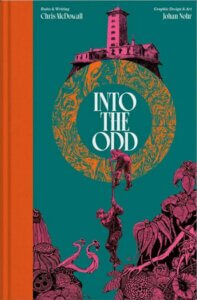 Publisher: Free League
Publisher: Free League
Or should that be ‘Into the ODD’, because ‘odd’ is a reference to Original Dungeons & Dragons? The latest edition of this OSR classic is published by Free League (yes, those guys again) and it looks better than ever. The rules are simple – roll dice for Strength, Dexterity, and Willpower – and based on your rolls you’ll get a starter package (a good one if you’ve got high attributes, a lousy one if you maxed out on the dice). Then you go do things. Odd things. It’s a surreal fantasy adventure hex-crawl shot through with doses of horror, sci-fi, and dungeon-bashing.
Try it: If you like random tables and weird fantasy.
Dungeon World
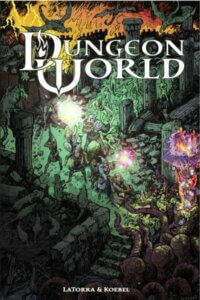 Dungeon World is a ‘powered by the Apocalypse’ game, meaning it shares a ruleset and key concepts with Apocalypse World. Interestingly, its core mechanic is based on the 2d6 reaction roll chart from B/X, although Dungeon World takes that simple table to a lot of very creative places. The game is a mix of free-form and detailed systems in which things only happen once the PCs have chosen their response – and only the players roll dice. So that orc chieftain will hit you with her sword, unless you decide to defend, trick, or bluff your way out of trouble. To that end, players don’t have skills and abilities, they have Moves, such as ‘Hack and Slash’ and ‘Spout Lore’. Character classes provide unique moves, such as ‘Shapeshifter’ (Druid) and ‘Holy Smite’ (Paladin). It’s a different approach to gaming as it puts the PCs at the center of everything that happens. Indeed, even the game even includes the players in worldbuilding. Want to know why the Cursed Forest is cursed? Dungeon World invites you to “play to find out what happens”.
Dungeon World is a ‘powered by the Apocalypse’ game, meaning it shares a ruleset and key concepts with Apocalypse World. Interestingly, its core mechanic is based on the 2d6 reaction roll chart from B/X, although Dungeon World takes that simple table to a lot of very creative places. The game is a mix of free-form and detailed systems in which things only happen once the PCs have chosen their response – and only the players roll dice. So that orc chieftain will hit you with her sword, unless you decide to defend, trick, or bluff your way out of trouble. To that end, players don’t have skills and abilities, they have Moves, such as ‘Hack and Slash’ and ‘Spout Lore’. Character classes provide unique moves, such as ‘Shapeshifter’ (Druid) and ‘Holy Smite’ (Paladin). It’s a different approach to gaming as it puts the PCs at the center of everything that happens. Indeed, even the game even includes the players in worldbuilding. Want to know why the Cursed Forest is cursed? Dungeon World invites you to “play to find out what happens”.
Try it: If you want your OSR to be very free-form and all about the players.
Adventure Time – conversions, compatibility, and all the classics
One of any OSR game’s biggest appeals is the ability to run classic D&D modules with a minimal conversion fuss.
Been itching to play the original G-D-Q series? The ‘B’ modules (including B1 In Search of the Unknown and B2 The Keep on the Borderlands)? The ‘Slavers’ modules (A1–A4)? The legendary and completely bonkers S series (S1 Tomb of Horrors, S2 Expedition to the Barrier Peaks, S3 White Plume Mountain and S4 The Lost Caverns of Tsojcanth)? D&D has been around since 1974, and there have been enough adventures published since then to fill a lifetime of gaming. With an OSR game, you can usually pick these up and go, no conversion required.
Or you could delve into Goodman Games’ reissues of these (and more) classic modules. Some are updates from earlier editions to 5E D&D while others are built for DCC.
Some include guidelines for converting old modules, or have them on their websites; others (especially those in the ‘new school rules, old school feel’ category) will require you to wing it a bit more. Whatever your fancy, OSR games have you covered.
But that’s the whole point of the OSR: not to precisely calculate challenge ratings, monster-to-player ratios and other details, but rather to do what feels right and adjust on the fly. A great rule to keep in mind:
When in doubt, roll and shout.
AUTHOR BIO
Michael Butler is from Sydney, Australia. Over the years he’s organized game conventions, contributed to magazines, and written supplements for White Wolf and Dream Pod 9. He likes games old and new and his favourite OSR is Mork Borg, because he always wanted his life to be like a heavy metal album cover.
